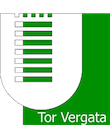Self-Translation from a Diglossic Perspective: The Reality of the Basque Country
Abstract
As referential researchers of the phenomenon, such as Santoyo, Grutman, or Dasilva, have repeatedly stated, self-translation is not an exception but an activity that has been present in various countries and various language combinations throughout the centuries. It is also the case that self-translation is recurrent in particular places and moments in history. As Grutman describes it, post-Franco Spain is a paradise of self-translation (Grutman, 2016: 60), where Catalan, Galician, and Basque writers tend to translate their own works into Spanish.
This paper aims to approach the phenomenon of self-translation within contemporary Basque literature from a macroscopic perspective. As all Basque authors are at least bilingual nowadays, they are able to choose the language in which to write their work, and to decide whether or not they want to undertake the process of self-translation. Data collected for this study will show that there is a considerable number of self-translations within Basque literature. In this contribution I will offer a general overview of the phenomenon, taking into account various factors, such as target languages, frequency, directionality, chronology, genres, reasons for self-translation, etc., which will help describe the main characteristics of self-translation in a diglossic literature such as Basque. The paper will also address the sociolinguistic reality of the Basque Country, which will help the reader better situate the context in which these self-translations are produced.
Come hanno ripetutamente affermato eminenti studiosi di autotraduzione quali Santoyo, Grutman o Dasilva, il fenomeno autotraduttivo, lungi dall’essere un’eccezione, è un’attività presente lungo i secoli in vari paesi a in varie combinazioni linguistiche. Avviene anche che l’autotraduzione ricorra in modo particolare in un determinato luogo e tempo storico. Come afferma Grutman, la Spagna post-franchista è un paradiso dell’autotraduzione (Grutman, 2016: 60), dove autori catalani, Galiziani e baschi tendono a tradurre il proprio lavoro in spagnolo.
Questo lavoro indaga il fenomeno dell’autotraduzione nella letteratura basca contemporanea da un punto di vista macroscopico. Dato che al giorno d’oggi gli scrittori baschi sono quantomeno bilingui, questi autori sono in grado di scegliere la propria lingua di scrittura e se intraprendere o meno il processo di autotraduzione. La raccolta dati per questo studio dimostra che esiste un numero considerevole di autotraduzioni nella letteratura basca contemporanea. In questo contributo offrirò una panoramica generale del fenomeno tenendo in considerazione diversi fattori quali la lingua di arrivo, la frequenza, la direzionalità, la cronologia, i generi e le ragioni dell’autotraduzione e così via, in modo da contribuire ad una conoscenza delle caratteristiche del fenomeno nella realtà diglossica della letteratura basca. Il saggio tiene in considerazione anche la realtà sociolinguistica dei Paesi Baschi, per consentire al lettore di comprendere il contesto nel quale queste a autotraduzioni vengono prodotte.







